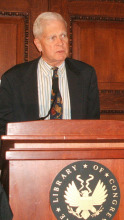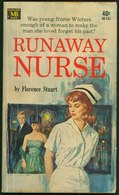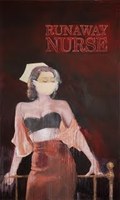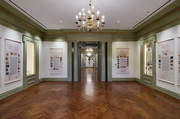 The White House, it seems, is about to replace James H. Billington as Librarian of Congress. Billington (left), a distinguished scholar appointed by President Reagan in 1987, turned 80 in June. He’ll mark his 22nd anniversary in the job on Sept. 14, and an announcement may come around that time. At least that’s what some knowledgeable people in Washington suggest.
The White House, it seems, is about to replace James H. Billington as Librarian of Congress. Billington (left), a distinguished scholar appointed by President Reagan in 1987, turned 80 in June. He’ll mark his 22nd anniversary in the job on Sept. 14, and an announcement may come around that time. At least that’s what some knowledgeable people in Washington suggest.
The front-runner at the moment appears to be Carla D. Hayden, head of the Enoch Pratt Free Library, Baltimore’s public library, since 1993. Raised in Chicago, she earned a PhD at the University of Chicago; was, early on, a children’s librarian; and eventually became Chief Librarian of the Chicago Public Library. She’s seen
 here on a July visit to a branch library for the Pratt’s Preschool Storytime! program.
here on a July visit to a branch library for the Pratt’s Preschool Storytime! program.
The White House declined to comment; and, I caution, this may change and there may be another contender whose name hasn’t surfaced.
But whoever gets the nod, Billington will be a tough act to follow. He’s a Russian expert and the author of at least five books. A Rhodes scholar with a PhD from Oxford, he taught history at Harvard and Princeton, then directed the Woodrow Wilson International Center for Scholars.
At the Library, Billington made his mark with programs like the World Digital Library, an international library connected to more than 30 national libraries and supported partly by UNESCO. He also founded Open World, a cultural exchange program approved by Congress in 1999 that has brought more than 14,000 Eurasian “current and future leaders” to the U.S. to get a first-hand experience with “American democracy, civil society and community life.” Here’s a link to Billington’s bio on the LOC website.
The Library of Congress is the oldest federal cultural institution and the largest library in the world. If you haven’t taken a look lately, you may be surprised at what available online, let alone at the site. There’s plenty of there for arts-lovers, particularly in performing arts.





